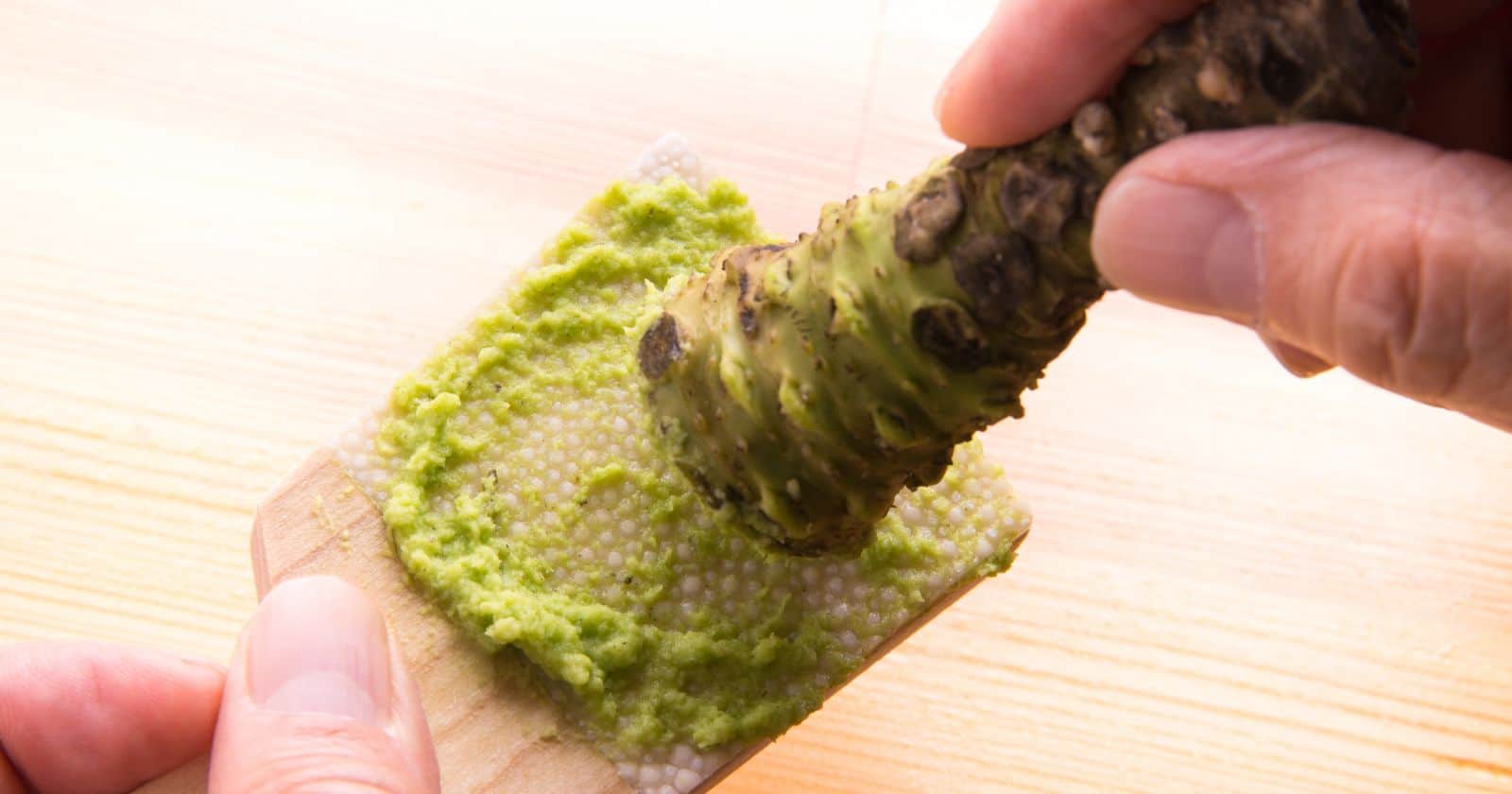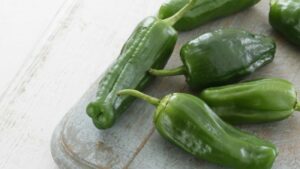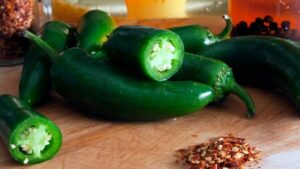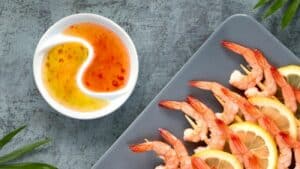That fluorescent green paste served alongside your sushi—is it supposed to torch your nasal passages or leave you with a more balanced, nuanced heat? If you’ve ever pondered the true nature of wasabi’s
As it turns out, the wasabi we know is not quite what tradition intended.
Genuine wasabi comes from grating the fresh stem of a Japanese plant into a delicate green paste. This real wasabi delivers a complex flavor experience: An initial burst of spiciness quickly gives way to subtle sweet and herbal notes.
The sinus-scorching wasabi commonly served in restaurants is actually a westernized imposter, made from horseradish, mustard, and food coloring. This wasabi mimic overpowers the palate with prolonged, one-dimensional heat.
So is wasabi meant to be so spicy? Not exactly. Traditional Japanese cuisine prized wasabi’s nuanced flavor spectrum, balancing its
While a touch of wasabi
What is Wasabi?
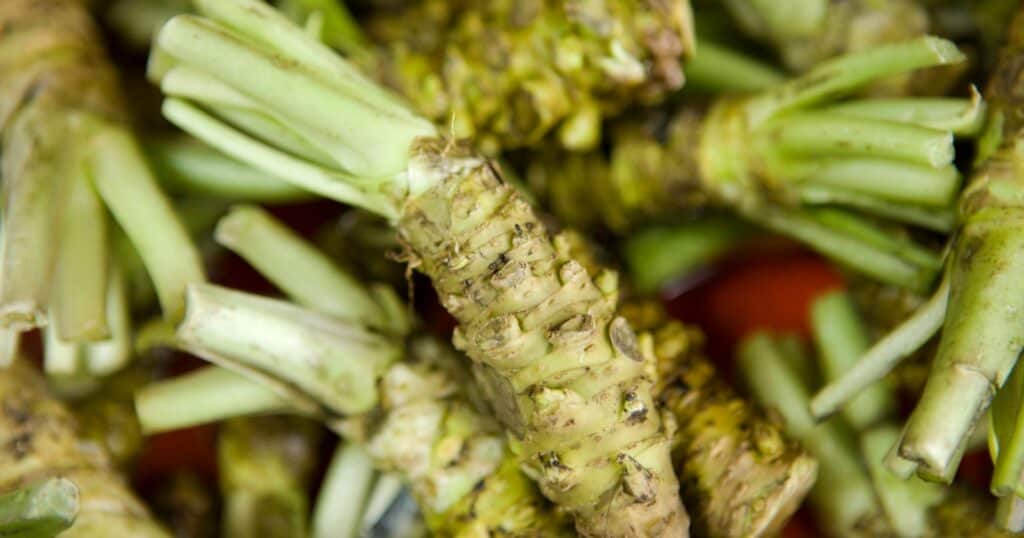
Wasabi comes from the root of a plant called Wasabia japonica, which is part of the brassica family alongside cabbage, broccoli, and mustard. The wasabi plant is native to mountain river valleys in Japan.
Authentic wasabi is made by grating the fresh stem of the wasabi plant into a fine pale green paste. This freshly grated wasabi delivers a complex flavor profile combining spiciness, sweetness, and umami. The heat quickly dissipates, leaving a refreshing sensation.
However, most sushi restaurants don’t serve fresh wasabi. The bright green paste we’re accustomed to is typically a mixture of European horseradish, hot mustard, and green food coloring. This common “wasabi” imposter creates more intense heat that lingers longer than fresh wasabi.
The Science of Wasabi’s Spicy Compound
So what makes wasabi spicy in the first place?
The answer lies in a volatile compound called allyl isothiocyanate, also found in mustard, horseradish, and other plants in the brassica family.
When the cells of the wasabi root are damaged during grating, an enzyme called myrosinase converts precursor compounds into allyl isothiocyanate, creating that signature wasabi heat.
Allyl isothiocyanate stimulates receptors in the nose and mouth that sense irritation and heat. The vapors especially trigger nasal receptors, creating a short-lived but powerful spike of spiciness felt in the sinuses more than the tongue.
Factors Influencing Wasabi’s Spice Level
Several factors impact the intensity of wasabi’s allyl isothiocyanate compound, influencing its overall spiciness:
- Freshness – Allyl isothiocyanate degrades over time after grating, so fresh wasabi is spicier.
- Storage method – Storing grated wasabi uncovered causes allyl isothiocyanate to dissipate, reducing
spice . Covering helps retain heat. - Time after grating – Even brief exposure to air starts diminishing wasabi’s
spice . Eat freshly grated wasabi immediately for maximum zing. - Method of grating – Grating styles impact cell damage and allyl isothiocyanate release. Fine microplane graters maximize
spice . - Origin – Wasabi grown in different conditions produces varying allyl isothiocyanate levels. Some regions cultivate spicier wasabi.
How Does Wasabi’s Spice Compare to Peppers?
Wasabi and chili peppers both deliver a pronounced spicy kick. But they derive their heat from completely different chemical compounds.
Wasabi’s punch comes from allyl isothiocyanate, which mainly affects nasal passages and receptors in the mouth. It creates a short, potent spike in spiciness.
Meanwhile, peppers get their heat from capsaicin, which directly stimulates nerve endings on the tongue. Pepper
On the Scoville scale, which measures a chili’s pungency, most wasabi ranks around 2,000 to 8,000 SHU. This makes it similar in
- Jalapeño peppers – 2,500 to 10,000 SHU
- Serrano peppers – 10,000 to 25,000 SHU
In contrast, some of the hottest chili peppers can surpass 1 million SHU, hundreds of times spicier than wasabi! These include:
- Habanero – 100,000 to 350,000 SHU
- Ghost pepper – 1 million SHU
- Carolina Reaper – 2 million SHU
While wasabi brings serious heat, chili peppers take it to the extreme. But Scoville ratings don’t tell the whole story. Wasabi’s unique sinus-piercing effects make it subjectively feel hotter than the numbers suggest.
At equal concentrations, wasabi may initially taste spicier than a jalapeño thanks to its vapor-borne allyl isothiocyanate. But the long-lasting burn of capsaicin eventually overtakes wasabi’s quick spike.
So while it can stand toe-to-toe with peppers for short burst intensity, wasabi’s ephemeral heat makes it feel milder overall next to the sustained fire of chili
Tradition of Wasabi in Japanese Cuisine
In traditional Japanese cuisine, wasabi is highly valued for its distinct flavor and is not used solely for intense heat.
Here are some classic ways wasabi is incorporated to enhance foods:
- With sashimi – A delicate dollop of wasabi accompanies raw fish like tuna or salmon sashimi. Its
spice cuts through the rich fattiness. - Mixed into soy sauce – For sushi dipping, a touch of wasabi is combined with soy sauce. This adds a kick without overpowering the fish.
- As pickle brine – Japanese su-zuke involves pickling veggies in a wasabi-infused broth for a spicy kick.
- With noodles – Soba noodle dipping sauce may incorporate wasabi for flavor. The heat dissipates quickly so as not to overwhelm the noodles.
In moderation, wasabi adds pleasant spiciness and aroma. But an excess can overpower other flavors. Traditional usage balances wasabi’s heat to enliven, not overwhelm.
Authentic Wasabi vs. Western Wasabi
Most of the wasabi we encounter at sushi restaurants is actually a westernized imitation. So how does authentic, fresh wasabi differ in flavor?
Real wasabi offers a more nuanced, complex heat. The initial burst dies down quickly, revealing sweet, herbal notes.
Western wasabi delivers more prolonged, intense spiciness. It lacks the rounded flavor profile of real wasabi, tasting harsher and more one-dimensionally hot.
Here’s a quick comparison:
| Authentic Wasabi | Western Wasabi |
|---|---|
| Freshly grated rhizome | Horseradish/mustard mix |
| Initial strong | Lingering, intense spiciness |
| Sweet, vegetal aftertaste | Harsher, flat aftertaste |
| Subtle, aromatic | Pungent, sinus-burning |
While western wasabi makes its presence known through sheer
Wasabi Pairings and Uses
Beyond sushi and sashimi, wasabi can enhance all kinds of dishes when used creatively:
- Salmon and tuna – Wasabi accentuates the rich fattiness of fish like salmon and tuna. Use in marinades, sauces, spreads, and dressings.
- Mayonnaise-based sauces – Mix wasabi into mayo, aioli, or remoulade for a spicy condiment for vegetables, sandwiches, or fish.
- Vinaigrettes – Add a touch of wasabi paste to brighten up basic vinaigrettes. Toss with fresh greens or use as a dip for dumplings or spring rolls.
- Snack foods – Wasabi pairs well with chips, crackers, edamame, or potatoes. Sprinkle on some wasabi salt or dip in wasabi-spiked mayo.
- Cocktails – For an extra kick, rim glasses with wasabi powder or incorporate wasabi-infused syrups into drinks.
Milder Wasabi Alternatives
For those who find wasabi too spicy, several alternatives can mimic its flavor with less heat:
- Horseradish – Freshly grated horseradish has a similar peppery bite to wasabi. Use 1 part horseradish to 3 parts wasabi in recipes.
- Mustard – Good prepared mustards like Dijon lend tangy flavor with less
spice . - Grated ginger – For sushi, fresh ginger offers clean heat and palate cleansing.
- Green radish – Daikon and other green radishes combine peppery crunch with gentle
spice when grated. - Pickled plums – Umeboshi paste made from pickled Japanese plums provides sour salty balance.
- Watercress – This leafy green’s bittersweet taste contains spicy mustard oils similar to wasabi.
Finding the right wasabi substitute comes down to personal taste preferences. But these milder options allow you to customize wasabi heat while still enjoying its unique flavor profile.
So is wasabi supposed to be spicy? While we may think of it only as a sinus-scorching kick, tradition shows wasabi is more than just heat. Fresh wasabi delivers a complex array of sensations. So don’t fear the

